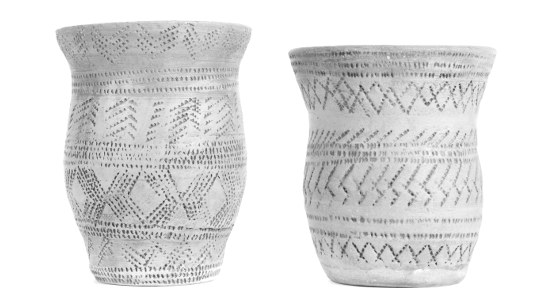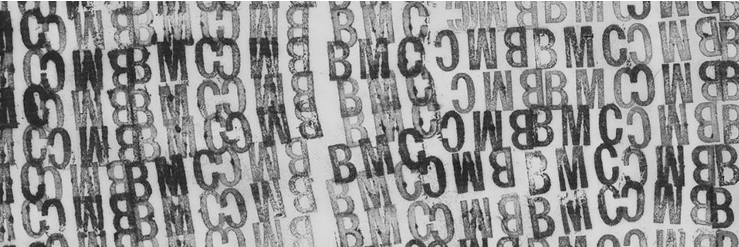Dehn’s 1939 study “On Ornamentation" pursues a quasi-axiomatic presentation beginning with rudimentary motifs before synthesizing more complex types, like the meander. His first example is a decoration from the Stone Age: a row of equally spaced marks set horizontally around an earthenware vessel, perhaps like these ancient pots [↓] in the Bowes Museum. He observes that the execution of even such a humble pattern demanded that the artist coordinate three different instances of order: the equivalence of each mark to the next mark; the equivalence of each space between a pair of marks and the space between the next pair; and the proper choice of separation so as to evenly divide the vessel's circumference. “The solution,” Dehn observes, “affords satisfaction as the solution of a reckoning assignment.”

By stacking rows so each mark is positioned between two neighboring points of the previous row the sense of a “rule” or “higher rhythm” emerges. Inevitably the artist is drawn to connect the dots, thereby dividing the surface into a lattice or “two-dimensional rhythm” that Dehn celebrated as a momentous event in the history of mathematics: “this new thing, the unintended, is already to be denoted as a Theorem…one of the first mathematical theorems ever encountered by a human.”

Ruth Asawa explored similar rhythms by similarly humble means in her Black Mountain College laundry stamp work [↑]. For Dehn, there was a natural progressions from such elementary forms of repetition to more complex patterns of checkerboards, meanders, spirals, and the ideas studied by mathematicians. At the end of his long essay he concludes:
among all these forms, only a few principles must be acknowledged, basic tendencies of the human spirit which are inextricably bound up with music, architecture, and every artistic expression. These principles are mathematical in nature and mathematical propositions are discernible in many ornaments. Thus we are able through our observations to find a connection between the beautiful works of those who create sensuous forms and the manifold shapes with which the mathematician works in the abstract.In class we will explore the variety of rhythmic pattern by assigning ourselves the problem of reckoning binary sequences.
September 17, 2025
Rhythm
Reading:
Rhythm
Reading:
On Ornamentation (Max Dehn)
Resources:
Poetry, Daisies, and Cobras (Manjul Bhargava)
BMC Laundry Stamp (Ruth Asawa)